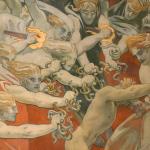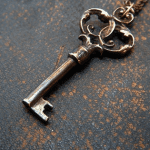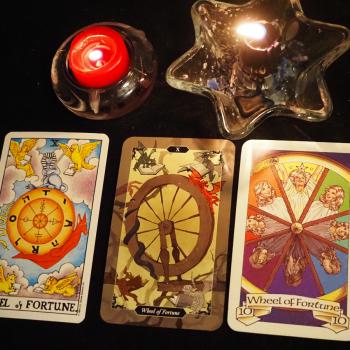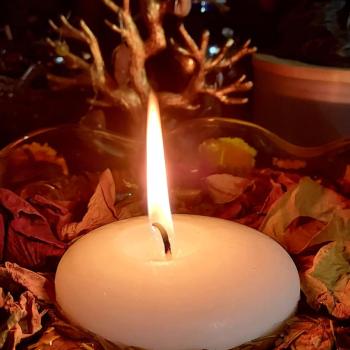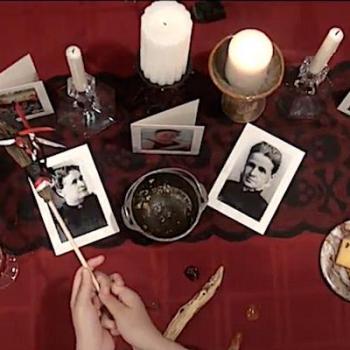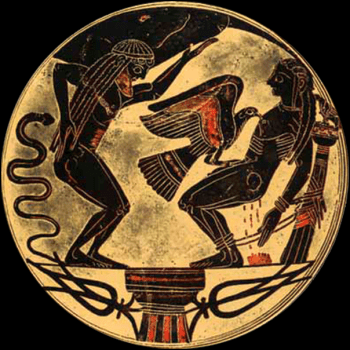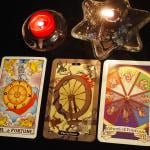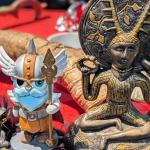
This is an excerpt of the service I wrote after the election in 2016. It feels appropriate again.
There are times when it feels as if everything is coming apart. The oldest story we have of the labyrinth tells us of just such a time.
Pasiphae, the queen of the city-state Crete gave birth to a monster, a man with the head of a bull, who was named Asterion, but is more often called the Minotaur. Minos, the king of Crete was so horrified by this abomination that he hired the famed architect and engineer Daedalus to construct a prison for the beast. Daedalus designed a labyrinth, so intricately complex that it would be impossible to escape from it. The Minotaur was imprisoned in the center of the labyrinth.
At the time, Crete claimed dominion over the neighboring city-state Athens. And so the Cretans decreed that every seven years, Athens must send seven young women and seven young men to be sacrificed to the Minotaur by being sent into the labyrinth. The ruling family of Athens decided to choose these unfortunate victims by lot. And so every seven years, they drew names. And on the third round of this vicious cycle, the king’s own son Theseus was drawn by lot. The king was beside himself with sorrow, but Theseus was determined to destroy the Minotaur and put an end to the suffering of Athens.
When the Athenians arrived in Crete, Theseus met the Cretan princess Ariadne, who fell deeply in love with him. She determined to help him in his quest to slay the Minotaur and escape the labyrinth, so she told him the secret to navigating its confounding passages. She gave him a ball of linen thread, and tied it near the entrance to the labyrinth, asking him to unspool it with him as he journeyed to the center. He did so, slayed the Minotaur, followed the thread out to his waiting beloved, and ended the sacrifice of the young people of Athens.
So goes the story we have inherited from antiquity. But even at this level of the story, all is not as it seems. A first inkling of this may be the story of Ariadne’s secret solution to the labyrinth. It is such a simple solution. Did it really never occur to anyone else to mark their path so as to be able to find it again? In the story as I have always heard it, this is presented as a genius, even a mystical idea, but it is so simple. Surely there must be more to it than this.
Then we have the puzzling name of the Minotaur, Asterion, which means star. Here is an intimation of light and guidance and beauty in this one supposed to be a hideous beast.
The Labyrinth
And the best clue to a story behind the story is the labyrinth itself. In the story, the labyrinth is a maze, in which it is possible to become lost. In fact, it is not just possible to get lost in this labyrinth, it is inevitable. The labyrinth itself is so impossible to navigate that it is effective at trapping the Minotaur himself, who would presumably have every reason to be looking for the way out. The story as I have always heard it implies that it is only the complexity of the maze, the impossibility of finding the right path that keeps the Minotaur within. So different from this labyrinth, from the labyrinth we use as a spiritual practice, which has but one path in and back out again, a labyrinth in which it is impossible to get lost.
But if you look at images of the labyrinth from ancient Crete, the images that are from the same time as this story, they are the images of our own labyrinth. Just like this one except for having a longer path that takes more turns along its way. The images of the labyrinth that come from the same time and place as this story show a single path into the center and back out. So, what are we to make of the seeming impossibility of the labyrinth? What is the nature of the star at the center? Why did Theseus need Ariadne’s help? And what is this solution of the linen thread really offering?
So even at this oldest telling, perhaps there is a deeper story that this myth is trying to tell us. Joseph Campbell writes to urge us to see ourselves in the hero of this story, and gives us this reassurance:
We have not even to risk the adventure alone; for the heroes of all time have gone before us; the labyrinth is thoroughly known; we have only to follow the thread of the hero path. And where we had thought to find an abomination, we shall find a god…Where we had thought to travel outward, we will come to the center of our own existence; where we had thought to be alone, we shall be with all the world.
In a world beset with terrors and atrocities, Theseus walks into the labyrinth in search of a way to free his people from oppression. He seeks a way to come into his own power and strength in service of his community. He goes into the darkness with the thread of love to guide his way. And in the center, he finds Asterion, the star.
Looking into the center of our own hearts, what do we fear to find? When the cycle comes around again to the time of testing and struggle, what do we fear to see within? Weakness, maybe. Smallness. A will that turns too easily from what we truly believe and value.
But at the center, it is not an abomination we find, but a god. The god that dwells within our own hearts. There are as many ways to talk about this as our different theologies. The Buddha nature. The Spirit of God within. Our inner light. The spark of the divine within. Our truest selves. Our deepest values. Our greatest love. However we say it, whatever it means to us, at the center of the labyrinth, we come face to face with our essence, that within which lights the way to integrity and courage, steadfastness and love. When we have come to end of that path into our hearts, we find there Asterion, the star. The guiding light of the divine or the guiding light of our own best selves.
And then following the linen thread of love back out, we can take that light to the world and overturn the systems of oppression and death.


